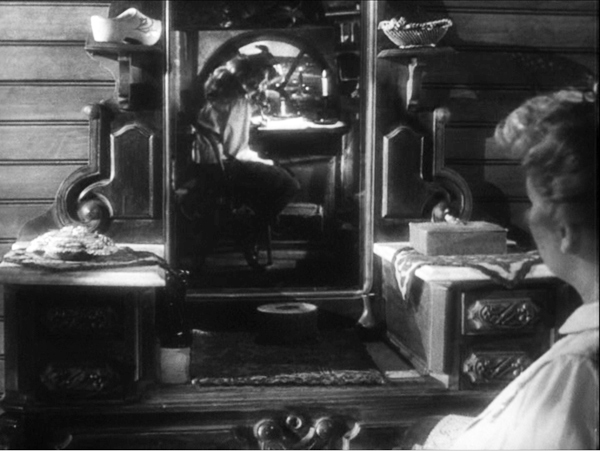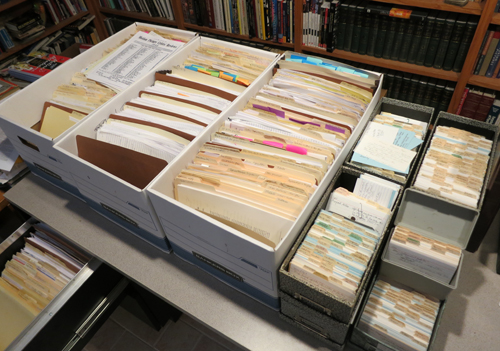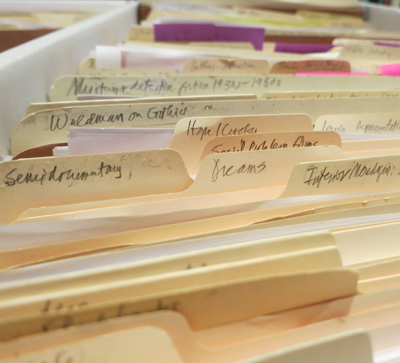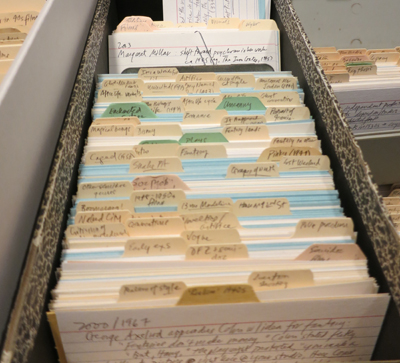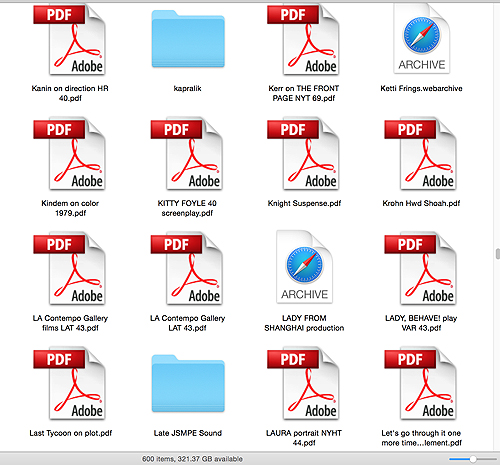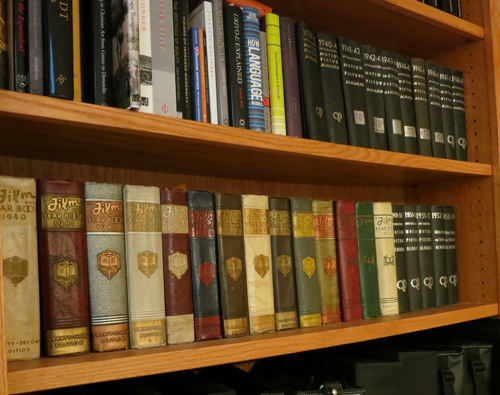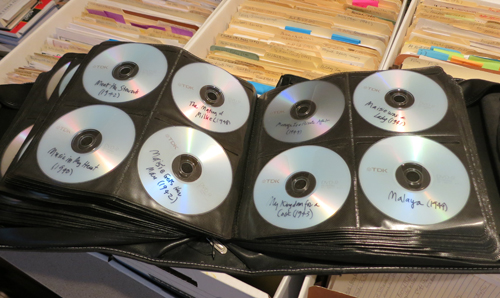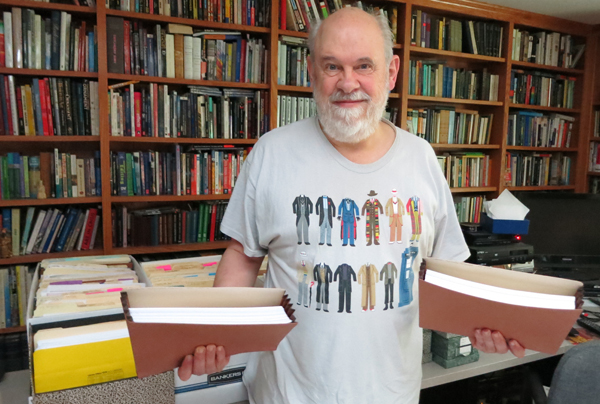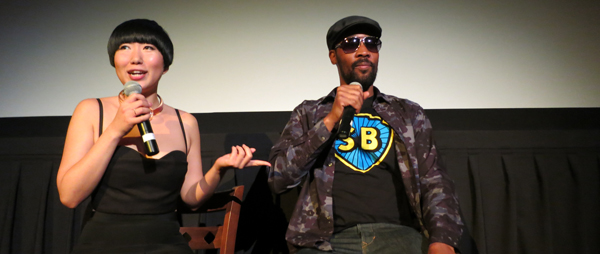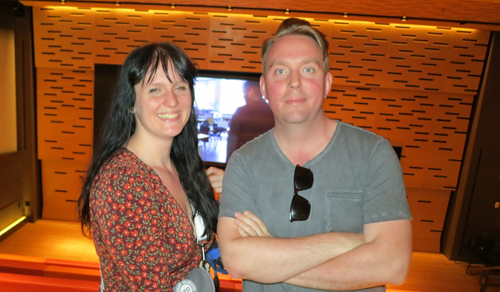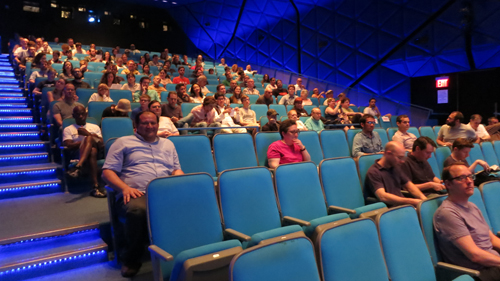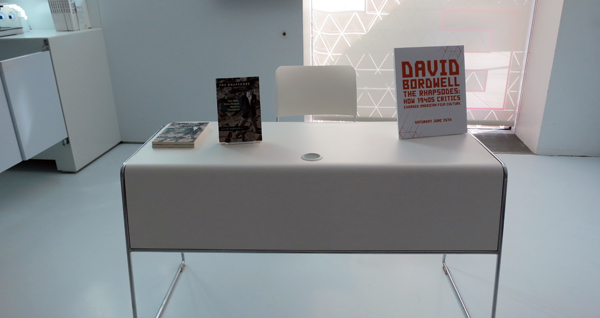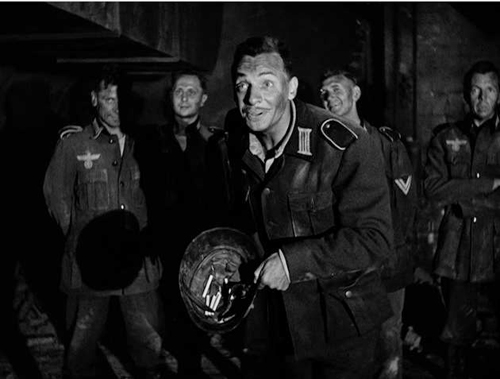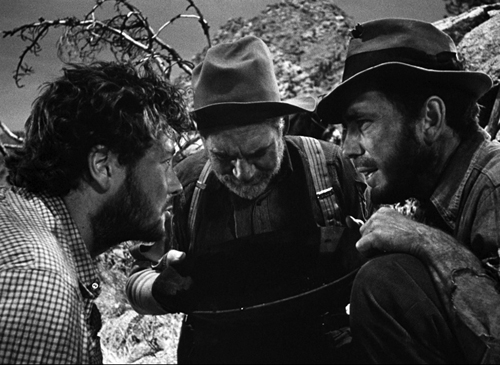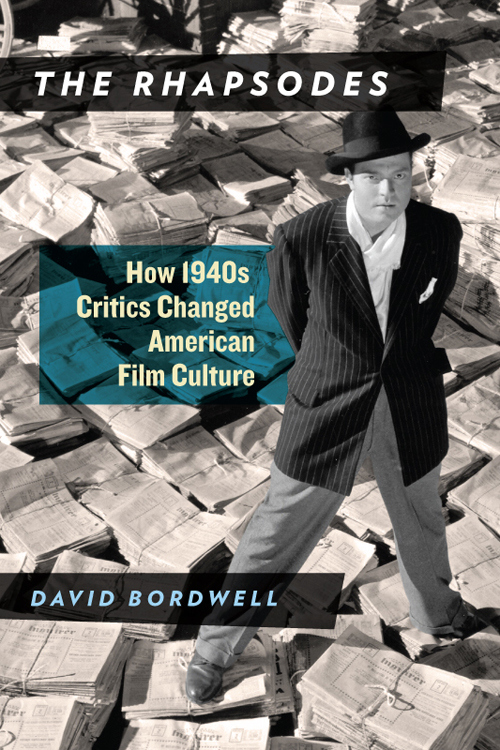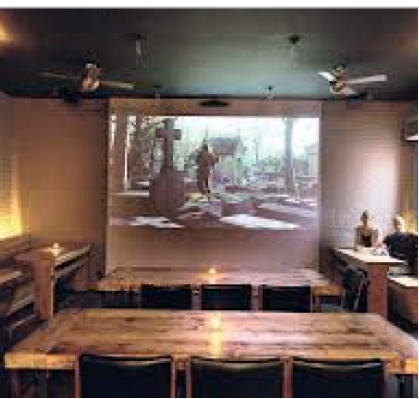Archive for the 'The Rhapsodes: American film critics of the 1940s' Category
Oof! Out!
I Remember Mama (1948).
DB here:
Jim Naremore calls 1940s American studio cinema “the beating heart of Hollywood.” I think he’s right. For about five years I’ve been working on a book taking EKGs of that beating heart. The book tries to understand some factors that made Forties Hollywood so dynamic and continually captivating.
Doing this called my attention to so many things: the fresh subject matter, the variations in genres, the stylistic experiments, the superb performances, the quality of line-by-line writing. But I focused on something that’s still pretty big: new, or newly revived, storytelling methods. Those methods made that period exciting–not just in film noir, where we tend to think that narrative got pretty wild, but also in melodramas, rom-coms, musicals, and the rest.
It’s the only study I know of how narrative techniques emerged and developed in a single era. No wonder it took five years. I watched over 600 films. I trawled through books and trade papers for hints about what the producers, directors, and writers thought they were doing. And because a lot of techniques weren’t unique to film (e.g., flashbacks, first-person voice-over, etc.), I wound up reading forgotten plays and neglected novels, while listening to hours of old-time radio.
The project started when I was asked to do a series of lectures, “Dark Passages,” for Belgium’s Summer Film College in 2011. Just before that, I tried out some ideas in some spring blog entries. Things crystallized in 2013, when I firmed the project up. In this entry, I promised, falsely, that the book would be short.
Since then, I’ve been immersed in fun, except for the Red Skelton movies. I loved having Mercury Theatre playing in my car during drive-time, and digging out 1930s and 1940s books from the oldest section of our university library.
I think the book says some new things about films of the period, and about the development of American popular entertainment more generally. For one thing, I think I have a better understanding of how High Modernist techniques (out of Joyce, Woolf, etc.) made their way into mass art. (Not directly, I’m convinced.) For another, I have a new respect for those filmmakers who tried something daring, even if–see my last post on The Chase (1946)–they somewhat botched it. And it develops some ideas I floated in The Way Hollywood Tells It: ideas about how modern filmmakers like Tarantino and Nolan are continuing a Forties tradition of somewhat experimental narrative.
Reinventing Hollywood: How 1940s Filmmakers Changed Movie Storytelling went off to the publisher this afternoon. Said publisher is the University of Chicago Press, who did a fine job with our Minding Movies and my recent little book The Rhapsodes, to which this is sort of a bigger, thuggier brother.
In the meantime, just to give you an idea of how one writer makes a book, I append some images from the workbench, before I pack up the paperwork. Here are the file folders and note cards I worked from. Hard to get those long note-card boxes nowadays; I needed 8 1/2 for this project.
Yes, I’m still a pen-and-paper nerd. All that’s changed since my 60s student years is the worsening of my handwriting.
Like you, I have hundreds of digital files too.
I was reliant on my old friends, The Motion Picture Almanac and The Film Daily Yearbook.
I amassed many albums of DVDs, as you’d expect–thanks chiefly to Turner Classic Movies.
Of course there are scores of books about films and figures of the period. I depended a lot on two key surveys: Douglas Gomery’s Hollywood Studio System (both editions) and Tom Schatz’s Boom and Bust: American Cinema of the 1940s. I didn’t rely much on all those books of a reflectionist, Zeitgeisty flavor–for reasons I’ve indicated here as well as in the book.
Reinventing Hollywood should be out this time next year. It should run to around 550 pages, with 180 illustrations. In addition, I’ll be putting up a dozen or so clips online to supplement some of my analyses. Hereabouts, from time to time I’ll preview arguments in the book.
I want to thank my editor, Rodney Powell, and his colleagues at the University of Chicago for supporting the book. I also owe a debt to Jim Naremore, Jeff Smith, and Malcolm Turvey for their close reading of the thing in draft form, and of course to Kristin for help in matters big and small. The couple dozen of friends and colleagues who helped me, too many to list here, are gratefully acknowledged in the text.
To give you a sense of what the book is up to, I’ve gathered most of my Forties blog entries into a separate category. Some of these are grist for the book, and some, like the ones on The Magnificent Ambersons and on The Chase, expand the book’s analysis.
In all it reminds me of what the Duke of Gloucester said to Gibbon: ““Another damn’d thick, square book! Always, scribble, scribble, scribble! Eh! Mr. Gibbon?” I’ve used this before, but after writing or rewriting seven books since I retired in 2004, it seems even more grimly appropriate. The reader is warned.
Photo by Kristin Thompson.
Manhattan wrapup: RHAPSODES and more
Aliza Ma and RZA at Metrograph, introducing screenings of Five Element Ninjas and House of Traps.
DB here:
We’re about to leave NYC after three months. I’ll miss all the movies and museums and food and friends, but I won’t miss the noise and congestion. I especially won’t miss the obliviousness of New Yorkers on the pavement–frowning into their cellphones as they nearly collide with you, steering baby assault vehicles as big as WW II half-tracks, and letting their longleashed pooches stray across streams of pedestrian traffic (there but for the grace of dog go I).
Okay, no more geezer complaints. Remarkable, the calming influence of an onion bagel with lox and cream cheese.
Our last days here have been really busy. Kristin gave a talk to the Egyptological Seminar of New York, “Beyond Thutmose: The District of Sculptors’ Workshops at Amarna” at the Metropolitan Museum of Art on Thursday. On Friday, I participated in a Film Comment podcast with critics Violet Lucca and Nick Pinkerton. We had a good time, talking about my book The Rhapsodes and other stuff. Here they are afterward in the Film Center.
Speaking of The Rhapsodes, Saturday I went to the Museum of the Moving Image in Astoria, where David Schwartz had mounted a four-film series tailored to the book. The first screening, Citizen Kane in a nice 35mm print, brought out a fair number of people.
Several people told me it was their first viewing of the film on the big screen, and indeed scale helps with this movie. It becomes more looming, from that screen-filling title onward, and you can see little details cunningly embedded. I noticed a couple of new items that I may write about later this summer. (Early in our stay, I already did a Welles birthday tribute here.) You always find more filigree in Kane; it looks forward to all our modern movies with in-jokes and Easter Eggs.
After Kane and a book signing (thanks, customers), I rushed off to Metrograph, a new venue with a consummate programming policy. There I met Aliza Ma, Jake Perlin, and their colleagues before catching the Chang Cheh double bill curated by none other than RZA of the Wu-Tang Clan. You see him with Aliza, in Scope of course, at the top of today’s entry.
 On Sunday I caught up with Subway Cinema/ NY Asian Film Fest co-founder Goran Topalovic and critic-filmmaker Eddie Mullins (Doomsdays) at a wonderful Serbian restaurant. Much talk of Hong Kong film, of course.
On Sunday I caught up with Subway Cinema/ NY Asian Film Fest co-founder Goran Topalovic and critic-filmmaker Eddie Mullins (Doomsdays) at a wonderful Serbian restaurant. Much talk of Hong Kong film, of course.
Later that day, after seeing Hong Sangsoo’s latest, we had a late dinner with 125% cinephile Michael Barker, Co-President and Co-Founder of Sony Pictures Classics. Amidst talk of great 30s and 40s films, we learned that SPC is gearing up several new releases, notably the Cannes hit Toni Erdmann for December.
During my stay, The Rhapsodes came out and got several reviews already. It just picked up another, a wide-ranging, idea-packed discussion from one of Cinema Scope‘s best writers, Andrew Tracy.
Our last nights have been devoted to catching up with friends we’ve missed in earlier weeks. Above are Jerry Carlson and Deb Navins with Kristin in front of the Royal Tennenbaums house in their neighborhood. Below is a shot of Kristin and me with my college friend, film publicist and director’s representative Lucius Barre.
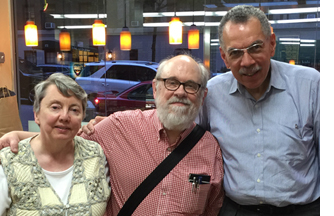 Our time here has just flown by. I finished a decent-ish draft of my 1940s book, but I haven’t done as much on other projects as I’d wished. I did, though, give talks at the Columbia Seminar on Cinema and Interdisciplinary Interpretation (thanks, Bill Luhr, Cynthia Lucia, and Krin Gabbard), Sacred Heart University (thanks, Sid Gottlieb and Sally Ross), Tufts University (thanks, Malcolm Turvey), Videology (thanks, Erik Luers and Austin Kim) and the 92nd Street Y (thanks, Alicia Harris-Fernandez). Going Upstate, as we New Yorkers call it, I gave the James Card Memorial Lecture at George Eastman Museum (thanks, Paolo Cherchi Usai and Jared Case), did some film viewing there, and visited the annual conference of the Society for Cognitive Studies of the Moving Image. No less fun: I met Paolo Gioli at the Harvard Film Archive (thanks, Haden Guest; blogged here) and re-met Terence Davies at MoMI (thanks, David Schwartz; blogged here).
Our time here has just flown by. I finished a decent-ish draft of my 1940s book, but I haven’t done as much on other projects as I’d wished. I did, though, give talks at the Columbia Seminar on Cinema and Interdisciplinary Interpretation (thanks, Bill Luhr, Cynthia Lucia, and Krin Gabbard), Sacred Heart University (thanks, Sid Gottlieb and Sally Ross), Tufts University (thanks, Malcolm Turvey), Videology (thanks, Erik Luers and Austin Kim) and the 92nd Street Y (thanks, Alicia Harris-Fernandez). Going Upstate, as we New Yorkers call it, I gave the James Card Memorial Lecture at George Eastman Museum (thanks, Paolo Cherchi Usai and Jared Case), did some film viewing there, and visited the annual conference of the Society for Cognitive Studies of the Moving Image. No less fun: I met Paolo Gioli at the Harvard Film Archive (thanks, Haden Guest; blogged here) and re-met Terence Davies at MoMI (thanks, David Schwartz; blogged here).
And to round things off, my blog entry on Edward Yang’s A Brighter Summer Day is now available in Chinese here. Thanks to Jiahan Xu.
When I get back to Mad City, I must buckle down and revise the 40s book and, I hope, write a blog on types of film criticism today. Also, too: at our Cinematheque, another series dedicated to The Rhapsodes. (Yeah, the PR steamroller is relentless.) I’ll give an introductory talk and introduce the movies.
Is it lunchtime yet?
THE RHAPSODES goes to the movies
Counter-Attack (Zoltan Korda, 1945).
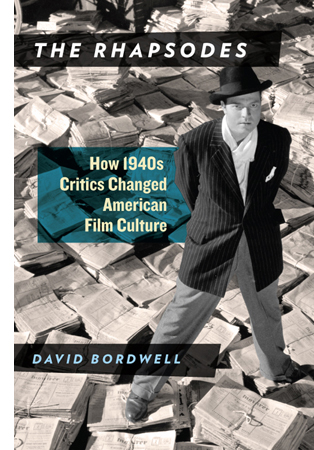 My little book on 1940s film critics has been lucky. It’s gotten more reviews, and gotten them more quickly, than anything else I’ve written in recent years. The online ones are by David Hudson at Fandor, Michael Curtis Nelson at PopMatters, and Michael Phillips of the Chicago Tribune. Not yet online, or available only through subscription services, are reviews by Geoffrey O’Brien (Artforum), Nick Pinkerton (Sight & Sound), and Dana Polan (Film Quarterly; the first page is available for free). All are generous and encouraging. I take the reviewers’ support to reflect the continuing appeal of four extraordinary writers who opened up fresh ways to think and talk about American cinema.
My little book on 1940s film critics has been lucky. It’s gotten more reviews, and gotten them more quickly, than anything else I’ve written in recent years. The online ones are by David Hudson at Fandor, Michael Curtis Nelson at PopMatters, and Michael Phillips of the Chicago Tribune. Not yet online, or available only through subscription services, are reviews by Geoffrey O’Brien (Artforum), Nick Pinkerton (Sight & Sound), and Dana Polan (Film Quarterly; the first page is available for free). All are generous and encouraging. I take the reviewers’ support to reflect the continuing appeal of four extraordinary writers who opened up fresh ways to think and talk about American cinema.
Coming up are two film series based on the book. At Astoria’s Museum of the Moving Image, David Schwartz has arranged a program of four films to play this weekend. Each is paired with a critic: Citizen Kane for Otis Ferguson, The Treasure of the Sierra Madre for James Agee, the little-seen Counter-Attack for Manny Farber, and The Picture of Dorian Gray for Parker Tyler. I’ll introduce Kane on Saturday and will hang around to talk with visitors, and copies of the book will be on sale.
After Kristin and I get back to Wisconsin, our Cinematheque will be running a comparable series across four weeks. Our programmer Jim Healy has put Sierra Madre, Counter-Attack, and Dorian on that bill as well, while our Ferguson pick is The Little Foxes. On 7 July I’ll introduce the series with a presentation. The full schedule is here.
If you’re in Astoria or in Madison, I’d be happy to see you!
On this site, of course there’s lots about Kane, most recently here. On The Little Foxes, try here and here.
P. S. 23 June 2016: James Wolcott, another remarkable critic-essayist (his work resides on my four-foot shelf), has kindly Tweeted about The Rhapsodes.
The Treasure of the Sierra Madre (1948). “The Huston trademark consists of two unorthodox practices—the statically designed image (objects and figures locked into various pyramid designs) and the mobile handling of close three-figured shots” (Manny Farber).
THE RHAPSODES comes to Videology
Tonight at 7 I’ll be at Videology, in Williamsburg, Brooklyn. Thanks to Erik Luers and Austin Kim for inviting me. We’ll talk about film critics of the 40s (Agee, Farber, Ferguson, Tyler) and–I hope, film reviewing today. (I have things to get off my chest.) If you’re in the mood and in the neighborhood, why not come by? There’ll be copies of the book around, and order forms for discount copies as well.
Lest this look too monastic, recall that there’s also this.
Videology info here: http://videologybarandcinema.com/.












